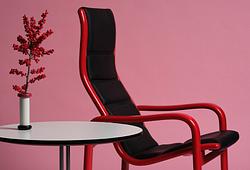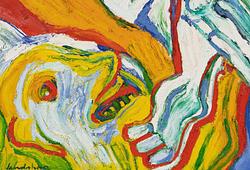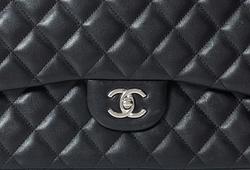Agda Holst
Agda Holst, "Den vita liljan"
Signed and dated 1924. Canvas 54 x 45 cm.
Good condition
Muut tiedot
The artist Agda Holst (1886-1976) worked and lived in Kristianstad, in southern Sweden, throughout her life. Exceptions were when she studied painting in Paris, Germany or Copenhagen.
During the 1920s, several of Agda Holst's foremost still lifes were added, including the auction's colorful and detailed painting, signed and dated 1924. Agda Holst's paintings from this time also catered to an international audience.
In 1933, Agda Holst exhibited her still-life painting at the Salon des indépendents in Bordeaux, following the initiative of an influential French art collector. Agda Holst received accolades from both critics and art audiences.
Agda Holst wanted to go out and see the world at an early age. Already in 1907, aged 21, she traveled to Paris. She studied at the Académie Colarossi for, among others, the Norwegian artist Christian Krohg and the Dutch Kees van Dongen in 1911-12. Agda Holst also studied in Munich, with the German artist Julius Exter in 1910-1911.
After some time in her hometown of Kristianstad, she returned in the early 1920s to Paris for new studies. This time with the famous André Lhote in 1920-21 and it was during this period that she really found her style:
The new objectivity, mixed with a wayward cubism. Her world of motifs consisted of portraits, still lifes and landscapes from southern Sweden.
Agda Holst's solo debut in Lund in 1927 was a great success. Sydsvenska Dagbladet's journalist Hakon Hedemann-Gade, leading critic at the time, wrote: "The artist's skill in holding together even fairly large canvases into a decorative whole is impressive - moreover, one must admire her ability to bring in a lot of portrait character in a form of stylized simplification".
Agda Holst now received portrait orders and realized that she could make a living as an artist. The interest was great, the critics praised her and the artist was satisfied.
Agda Holst had her first solo exhibition outside Skåne at the Värmlands Museum in Karlstad, and together with male colleagues she exhibited artworks in Copenhagen and Malmö. She now felt secure in her artistry and had a large separate exhibition at Malmö Town Hall in 1931.
Journalist Hakon Hedemann-Gade praised her in Sydsvenska Dagbladet. During a succession of years, Agda Holst exhibited together with the artist group Aura and in 1932 it was time for the Konsthallen in Gothenburg. There, the criticism was also positive. Agda Holst was also praised for her art at the Salon des Indépendants in Bordeaux in 1933.
As the only woman in the artist group Aura, Agda Holst attracted attention in Copenhagen, in Norrköping and at Liljevalchs. She also continued to exhibit together with the lokal Swedish art association and, considering the economy, took all the opportunities that were given to show off her art.
In 1994, the exhibition "The incredible reality - 13 female pioneers" was organized at Prins Eugen's Waldemarsudde. The pioneers included Siri Derkert, Vera Nilsson, Tora Vega Holmström and Agda Holst.
What they all have in common is that they were educated in Paris at a young age. Radical against the prevailing view of art, they came after their return to Sweden to make ground-breaking efforts for the breakthrough of modernism. Agda Holst's main subject circle was portrait and still life painting.
At the initiative of a French art collector, her portrait and still life were exhibited at the Salon des indépendents in Bordeaux in 1933. The auction's current still life unmistakably testifies to the artist's signature - a cultivated, refined color language with a perfect sense of the proportions and balance of the composition.
In recent years, efforts have been made to highlight important female artists from the first half of the 20th century. The work has resulted in, among others, Tora Vega Holmström, Agda Holst, Vera Nilsson, Siri Derkert and many others now being ranked and equated with contemporary male colleagues.
An important project was Moderna Museet's venture ”The Second Wish Museum”, 2006-2009, which aimed to supplement the collection with works by female artists mainly from the first half of the 20th century.
Last year, the National Museum in Stockholm showed paintings by Agda Holst, at the exhibition "Swedish grace. Art and design in 1920s Sweden".


































